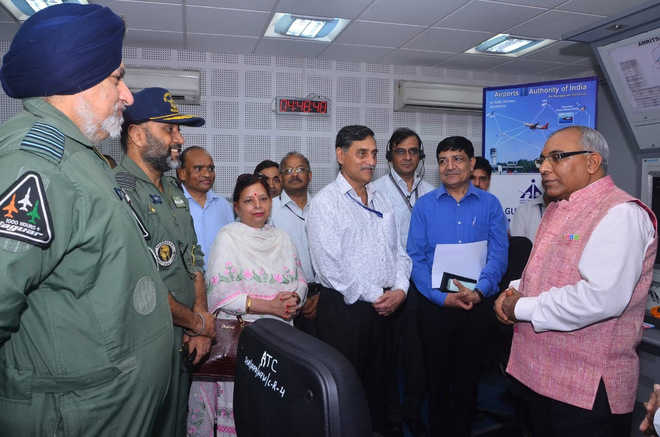Tribune News Service
Amritsar, July 20
Sri Guru Ram Das Jee International Airport is all set to glide into the select league of international airports in the country with the operationalisation of the Primary Surveillance Radar (PSR), Secondary Surveillance Radar (SSR) and Automatic Dependent Surveillance Broadcast (ADS-B).
AK Dutta, member of the Airports Authority of India (AAI), commissioned these radars at airport traffic controller (ATC) office on Friday.
ADS-B ground station will enable the ATC to accurately track the aircraft movement. Now, the ATC could control airspace of about 200 km radius around Amritsar, which was restricted to 50 km.
Over the period, radars have become an obsolete technology while ADS-B being far superior.
Earlier, radars helped the staff at the ATC to learn the movement of aircraft from 128.748 km and of approaching aircraft in the sky with a mono pulse. On the other hand, ADS-B has a range of about 250 nautical miles.
Secondary Surveillance Radar (SSR) and primary Surveillance Radar (PSR) will boost aviation vigilance at the airport.
The primary radar, which was earlier in the domain of the Air Force, has also been made available to the airport. Its coverage area is within 50 aeronautical miles of the airport.
Apart from consolidating air surveillance and traffic around the airport, these hi-tech gadgets will curtail fuel wastage that takes place during the hovering of flights around the airport, waiting for clearance to land. These will help in ensuring timely landing and take-off for various flights.
The staff at the ATC will come to know about the movement of aircraft even when these are 80 miles away. These radars will enable the ground staff at the ATS to learn the position of the approaching aircraft with a mono pulse.
Unlock Exclusive Insights with The Tribune Premium
Take your experience further with Premium access.
Thought-provoking Opinions, Expert Analysis, In-depth Insights and other Member Only Benefits
Already a Member? Sign In Now










